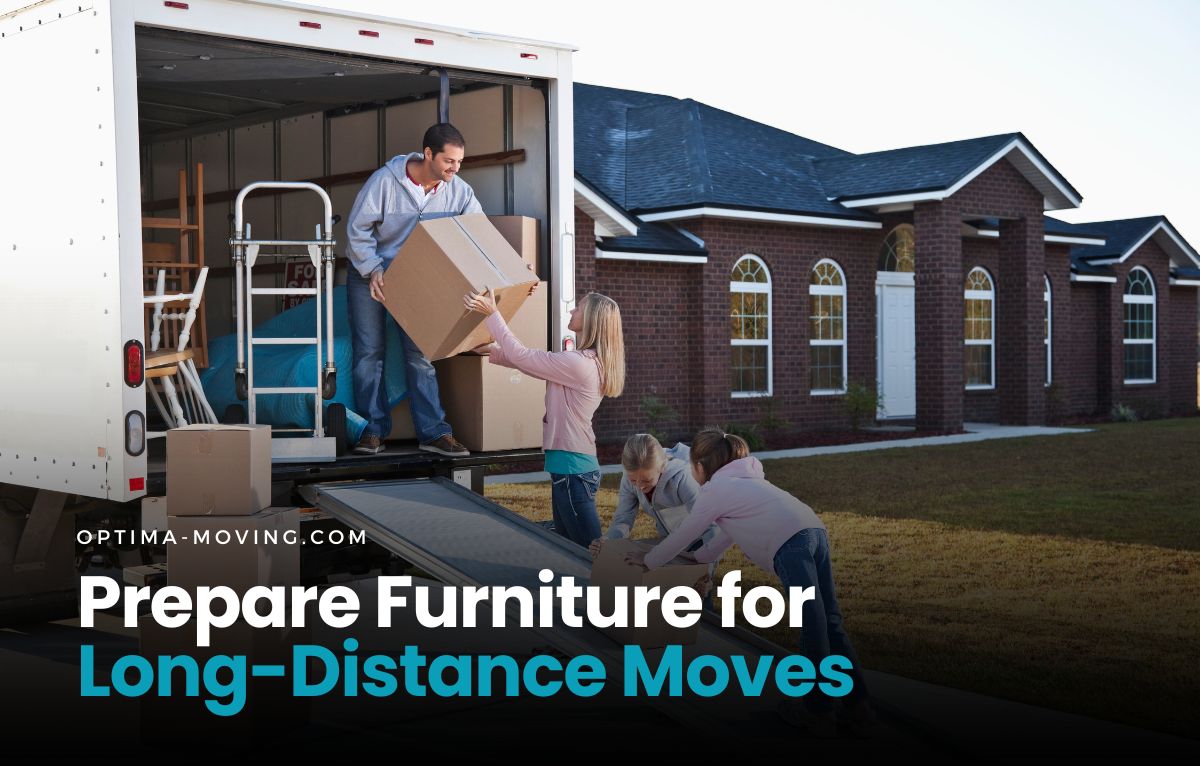Long-distance moves require more planning than simply loading a truck and hitting the road.
Furniture, especially large or delicate pieces, faces the risk of scratches, dents, or breakage if not properly prepared.
Knowing how to prepare furniture for long-distance moving helps you avoid damage, save money on repairs, and ensure everything arrives in the same condition it left.
With a few strategic steps, you can protect your investment and make unpacking at your new home much easier.
Start with an Inventory and Disassemble What You Can
Before you begin wrapping or dismantling anything, create a detailed list of every furniture item you plan to move.
This list helps you decide which pieces are worth taking and which might be better to sell, donate, or leave behind.
Taking photos of each piece is also a smart step. Images act as proof of condition in case you need to make an insurance claim and help you remember how certain items were assembled.
Large furniture is often easier and safer to move when broken down into smaller parts.
Beds, dining tables, shelving units, and some sofas can be dismantled to make them lighter and reduce the chance of damage in transit.
Keep screws, bolts, and small hardware in labeled plastic bags, taping them to the underside of the corresponding furniture or storing them in a dedicated box for easy access when reassembling.
This small effort saves time and prevents headaches at your new home.
Protect Surfaces, Edges, and Special Materials
One of the most important parts of how to prepare furniture for long-distance moving is wrapping each piece correctly.
Hard surfaces like wood can scratch easily, while upholstered items can tear or stain during handling.
Use furniture blankets for large items and secure them with packing tape or stretch wrap. For delicate edges or corners, add cardboard protectors before wrapping.
Some items require extra care. Remove glass from frames and pack it separately in padded sleeves or bubble wrap before placing it between cardboard sheets.
For marble surfaces, use multiple layers of wrap to avoid chipping.
Leather furniture should be covered with breathable material rather than plastic to prevent moisture damage.
Antiques or high-value items benefit from an added layer of bubble wrap under the blanket for maximum protection during the trip.
Coordinate with Your Movers
If you’re using a professional moving company, ask about their packing services and materials.
Some movers include wrapping in their base rate, while others charge extra.
Clarifying these details early prevents last-minute surprises.
Coordinating with them also ensures your packing method aligns with their handling process, reducing the chance of damage during loading and unloading.
This is also the time to ask about insurance or valuation coverage for your furniture.
While careful preparation is key, having protection in case of damage adds peace of mind, especially when moving valuable or sentimental pieces long distances.
Prepping Furniture for a Long-Distance Move
Use this as a quick reference before moving day:
- Create a furniture inventory with photos.
- Disassemble large pieces and label hardware.
- Wrap with blankets and protect corners with cardboard.
- Use special packing for glass, marble, or leather.
- Confirm packing standards with your moving company.
Loading and Securing Your Furniture
When loading furniture onto the moving truck, heavy items should go in first, positioned against the walls to create a stable base.
Lighter and more fragile items can then be placed on top or toward the center of the truck.
This layering not only makes efficient use of space but also creates natural cushioning for delicate pieces. Secure everything with straps or bungee cords to prevent shifting during transport.
For long-distance moves, think about the route your truck will take.
Sharp turns, sudden stops, and uneven road surfaces can cause movement inside the truck, so it’s worth double-checking that every piece is braced and tied down.
Using moving pads or extra blankets between items can keep them from rubbing against each other and causing scratches.
If you’re transporting items with drawers or doors, use stretch wrap or moving bands to keep them closed during the journey.
If your move involves multiple stops or storage time, securing the load becomes even more important.
Long-distance routes can mean hundreds of miles on uneven roads, and shifting during transit is one of the leading causes of dents, scratches, and structural damage.
A well-packed and well-secured truck can make the difference between furniture that arrives ready to use and furniture that needs costly repairs.
Unpacking and Reassembly
Once your furniture arrives, inspect each item before removing its wrapping. Start by comparing each piece to the photos you took before the move—this makes spotting new damage easier.
If you notice scratches, dents, or broken parts, take photos immediately for your records and file a claim with your mover if applicable.
The sooner you document damage, the stronger your case will be if you need reimbursement.
Using your inventory list and labeled hardware bags will make reassembly faster and less stressful.
Lay out all hardware before starting so you can see exactly what you’re working with.
For large items like beds or dining tables, have a second person assist to avoid strain or accidental drops during reassembly.
Give upholstered pieces time to air out, especially if they were wrapped in plastic during transport. This helps prevent lingering odors or moisture buildup.
For wood furniture, check for any loosening of joints or hardware after reassembly and tighten where needed.
Wiping surfaces with a clean, dry cloth after unpacking can remove dust or debris from the move, leaving your furniture looking as good as it did before it was loaded.
Taking these extra steps ensures your furniture is safe, functional, and ready to enjoy in your new home.
Setting Up for a Smooth Move
Mastering how to prepare furniture for long-distance moving means planning ahead, protecting every surface, and communicating clearly with your movers.
From creating a detailed inventory to securing items properly in the truck, each action reduces the risk of damage and helps your move go smoothly.
When done right, your furniture will arrive ready to use, saving you time, money, and stress in your new home.
If you’re moving in Maryland or the surrounding area, Optima Moving can help with professional packing, secure loading, and reliable transport for your long-distance move.




